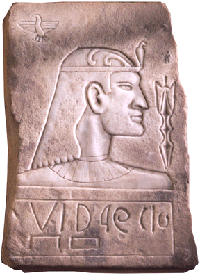Here’s the forty-sixth installment of LiteratEye, a series found only on The Art of the Prank Blog, by W.J. Elvin III, editor and publisher of FIONA: Mysteries & Curiosities of Literary Fraud & Folly and the LitFraud blog.
LiteratEye #46: Who Discovered the Americas? Egyptians, Irish, Chinese and Your Uncle Bob
By W.J. Elvin III
January 8, 2010

“Nowhere, alas, does bullshit and bang-me-arse archaeology flourish so well these days as in America where foolish fantasies pour from the press every month and sell like hotcakes.”
-Noted archaeologist and detective novelist Glyn Daniel, quoted in the book, Fantastic Archaeology.
Do you get lured off down a rabbit hole by claims of lost civilizations, fantastic explorations, bizarre archaeological discoveries and all that? Welcome to the club.
My membership dues have included books I’ve bought, bang-me-arse fabrications or not, about visits to the Americas by Chinese, Welsh, Scot, Irish, Basque, Libyan, Egyptian, Norse and other travelers in the days before Columbus.
There’s no shortage of fascinating tales. Take, for instance, the one about the Roman-Jewish settlement in the Tucson area, dating back a thousand years or so. Has to be a hoax, but if so how did it fool several respectable investigators?
That find hasn’t been in the news for a while but it was a matter of public fascination from the 1920s through the 1960s, only one of many mystifying cases challenging conventional wisdom regarding ancient exploration and settlement.
The book Fantastic Archaeology by Stephen Williams documents a number of these cases. The perspective is solidly academic, an effort to educate us befuddled, gullible rubes, but lacking the extreme arrogance and pomposity often encountered in such exercises.
One of Fantastic Archaeology‘s primary targets is Harvard professor Barry Fell, whose astonishing finds – the Zunis of the American southwest are transplanted Libyans, for instance – fill volumes. I’ve had a great time with his America B.C.: Ancient Settlers in the New World, a study chocked full of photos, charts, diagrams and all sorts of interesting evidence.
Some of the artifacts, I’d have to say, look as though they might have been manufactured “while you wait.”
Of course, Stephen Williams rips Fell up one side and down the other, accusing him of fraud. If true, Fell still deserves some kind of renown just for the complexity of his deceptions.
I recently picked up several other books in the field that run contrary to conventional thought. Let me tell you a bit about The Lost Treasure of King Juba by Frank Joseph.
This one is subtitled, “The Evidence of Africans in America before Columbus.” It’s a trip. The focus is Burrows Cave, a southern Illinois site where some 7,000 ancient artifacts were found, many of them gold. Well, so we are told.
The artifacts – mostly medallions – are supposed to be evidence that the site was occupied by Mauretanians — Africans who arrived about 2,000 years ago, having lost their country to conquering Roman forces. They reached Illinois by following an old Phoenician chart.
The Mauretanians brought along numerous gold artifacts. Stories abound regarding the current whereabouts of the gold. It may have been melted down in modern times, or sold to private collectors, or reburied when the cave was sealed up.
So, of course, the question is, where is the cave? Yep, that is the question. Following a mysterious explosion that sealed the cave, its exact location somehow got lost. Many thousands of dollars have been spent in sophisticated attempts to rediscover it.
Frank Joseph, author of the King Juba book, is among the leading lights of Ancient American magazine. The magazine is “No rehash of well-worn theories,” but rather a publication presenting “up-to-the-moment news about ongoing discoveries and original perspectives, bringing to light a surprising abundance of fresh material that is seriously challenging entrenched conceptions of our past.”
You can read a fairly lengthy article on the Juba treasure on the Ancient American magazine site.
For a contrasting perspective, by the way, it is hard to beat the Skeptical Inquirer, published by the Committee for Skeptical Inquiry. If Ancient American seems to go a little overboard in promoting any crackpot theory that comes down the pike, Skeptical Inquirer is just as enthusiastic in dismissing anything that challenges the conventional. Read both and you could be the life of the party whenever bang-me-arse archaeology is the theme.
image: Ancient American
(Copyright 2009 WJE, exclusive to The Art of the Prank, for reprint rights contact Literateye@gmail.com)
Check out previous LiteratEye episodes on The Art of the Prank.
